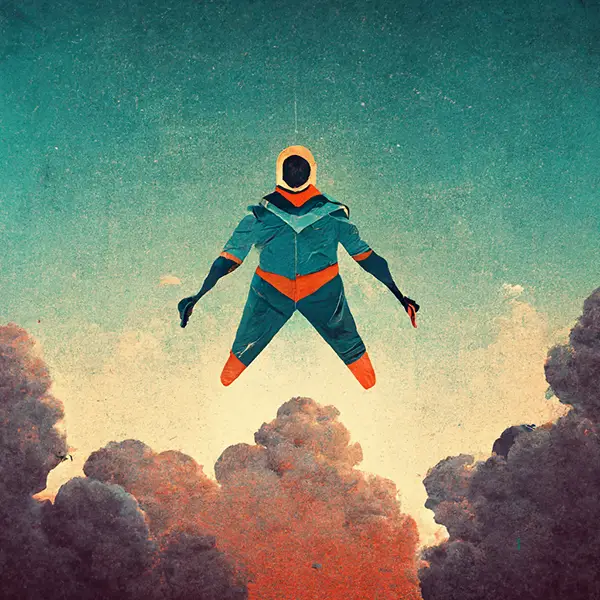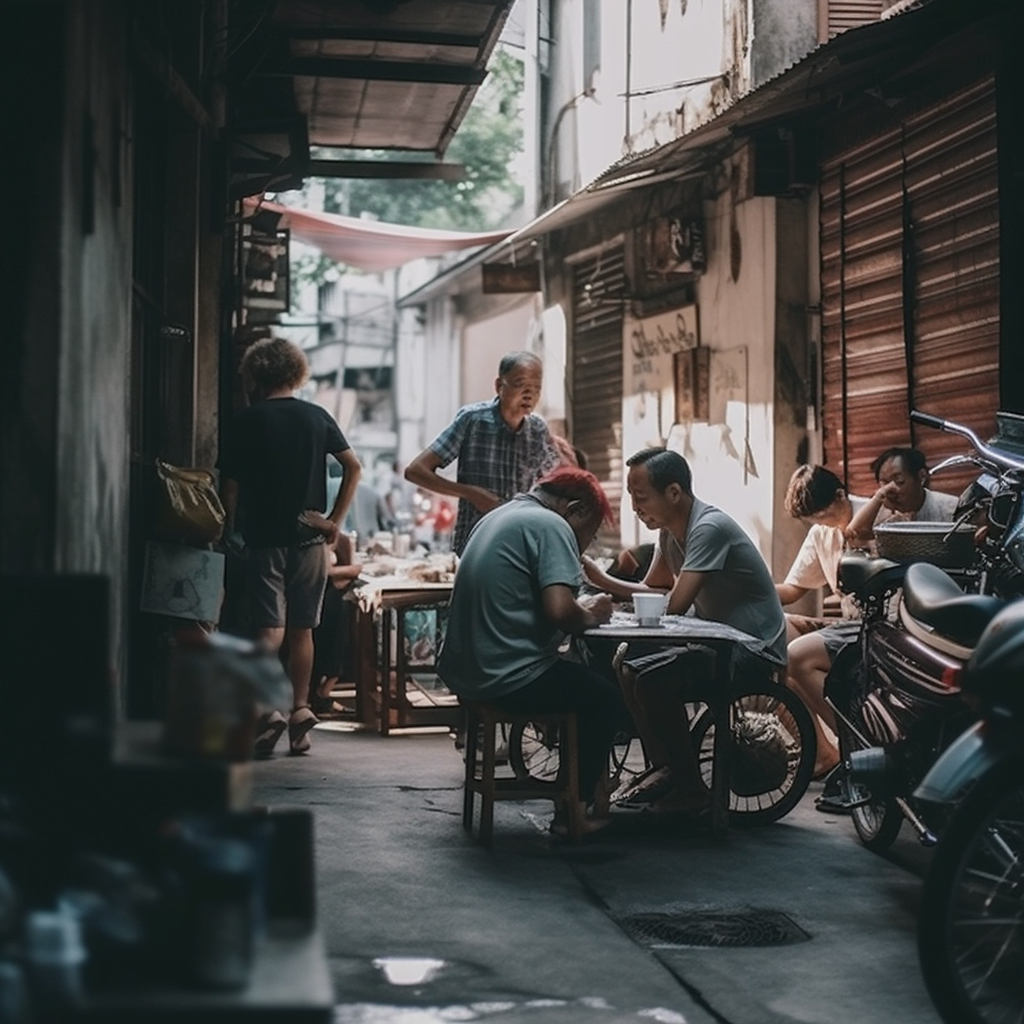I carted the beast back home, greased it up, and proudly announced to my wary family that I would soon become an expert at it.
The next two months saw me spending hours upon hours bouncing on the rickety device, hearing its constant squeak repeat almost methodically on its rusty springs.
10 minutes would go by, then I’d fall off, chastise myself, jump back on, and start hopping again.
Then it was 20 minutes, then 50.
Finally, hours and hours would pass until the summer was over and I never picked up the damn thing ever again.
It was almost cathartic in a way. Obsessive for sure. But it didn’t matter, any time I spent outdoors in the summer was time I spent away from a computer screen — to my parent’s delight.
But what if my parents were actually the reason I hopped ad infinitum during that bouncy summer? What if their way of life demanded that I hop and hop and hop ’til I no longer could drop?
For the children of these people, that was the case. Their community’s genetics or culture or way of life demanded they hop and hop and hop, in their own special way.
And it gave them real-life superpowers because of it.
Life Under the Sea
Travel over to South East Asia and you may find yourself crossing paths with a special kind of human being. One that belongs to an ethnic group spread across thousands of kilometers of ocean and beautiful tropical islands.
Some people call them sea nomads, others sea gypsies. Whatever the world names them, they are the remnant culture of a long-lasting thalassocracy situated between Indonesia, Malaysia, and the Philippines.
They are the boat people of South East Asia.
Their homes exist on mobile stilted houses rising above the seas. For other groups, their homes only touch land when they visit a harbor to trade. But all of their livelihoods come from beneath the waves that they spend most of their lives riding.
As you can probably guess, that way of life involves a lot of diving. The kind where you don’t have a SCUBA tank to help — free diving.
For at least one thousand years, people of this ethnic group have been spending up to five hours a day diving beneath the surface to catch lucrative sea cucumbers, pearls, and shells.
If you’ve ever believed in the phrase practice makes perfect, then imagine how that would go if you stretched it across 1300 years.
These people are underwater machines.
According to studies, an average person can hold their breath for around 30 to 90 seconds.
For the Sama-Bajau people — it’s slightly higher. Some claim to be able to hold their breath up to 780 seconds! More than 10 times the amount of a regular human.
They’ve also been observed regularly free diving 61 meters (200 feet) straight down into the bluish depths. While I may also be able to sink that far down, I’m not so sure I’d be able to come back up.
And since dealing with such great depths isn’t the easiest on our bodies — some members of the group actually rupture their eardrums at an early age — on purpose.
Now you might want to ask yourself, how dedicated are you to your profession? I don’t think I’m quite willing to lose any limbs over writing my scribbles. In fact, I seem to be actually gaining an extra one around my midriff.
But there is another side effect of having dozens of generations of people specializing in freediving. Their bodies adapted, genetically.
Among a few special gene markers, researchers who studied the group have found that the free diving families tend to have spleens that are about 50% larger than the rest of us.
And what does the spleen do? It stores oxygenated red blood cells. In other words, a mini-condensed SCUBA tank right inside their own body.
Neat.
It’s Getting Hot in Here
Travel up to Northern India and you might find yourself in a very peaceful environment. Surrounded by nothing but mountains, monks, and beautifully simplistic temples, you could finally relax.
Or die, because temperatures there can be phenomenally cold.
Perhaps that’s one reason that several Tibetan monks practice an ancient form of meditation called g Tum-mo or g-tummo. The world came to know of this form of graceful contemplation after seeing reports of monks being layered in cold soaking wet towels that become bone dry within an hour.
The crazy thing — this occurs while the monks are sitting and meditating in near-freezing-cold temperatures of around 4°C (40°F). Steam can even be seen rising from the towels before another one is draped over them.
And while this sounds like something out of a child’s bedtime story — studies have shown it’s a real thing.
Not only were the monks proved to be able to slow their metabolism by an astounding 60%, but their fingers and toes increased in temperature too, by over 8°C (14.4°F)!
Researchers studied the practitioners multiple times over a few decades to determine if this was actually possible, and if so, how. Their conclusions were the monks used two specific techniques — forceful breath and gentle breath — to naturally elevate their body temperatures.
They found these techniques, especially when practiced day in and day out for years on end, were able to activate areas of our brains responsible for autosomatic reactions in our bodies. This area includes, most importantly, the function of vasodilation.
This is a process in our veins and arteries where blood vessels become wider, allowing more blood to flow in. This results in less blood pressure and a warmer temperature in those areas.
And so, even if it seems like magic, people really can warm themselves up with pure thought alone. Mind over matter, indeed.
Run, Forrest, Run
Hop across the planet and plop yourself down on the rocky hills of Chihuahua, an area in Mexico. There you might find yourself in the middle of a race you have absolutely no chance at winning. One that has no breaks, goes through day and night and seems to never end.
If that’s the case, you might be running alongside a member of the Rarámuri (or Tarahumara, as the Spanish called them). Some of you might have heard of them in the bestselling novel, Born to Run, which topped the charts in 2009.
The Rarámuri live an interesting lifestyle. The area they live in is a landscape of vast mountains and canyons. And as their food comes from a variety of fruits, plants, and animals — their land requires they stay active.
One of the more interesting aspects of their culture is how they hunt. It’s called persistence running and it couldn’t have a better name. Perhaps I can explain what that is with a simple story.
Imagine going out and hunting a deer. But not with a gun or a bow (although that is sometimes used), but by chasing it down. Now look down and realize your footwear is extremely basic, not much more than a tied-on flipflop.
And then look around you to see hills, canyons, and mountains with all their rocky pleasures just waiting for you to stub a toe on.
Then ask a zoologist and find out that deer can run up to 80 km/hr (50 mph) — nearly double our own greatest efforts!
So, the only way to win — and have dinner later — is to outlast them until the point of exhaustion.
And that’s why the Rarámuri became famous. Because they’re likely some of the only people capable of doing just that.
Their culture also reflects the specialness of these long but seldom hunts. As part of a ritual, the group holds footraces that can last for hours on end, often up to 18 hours straight and lasting overnight.
One elder of the group even said she once saw a race that lasted 72 hours straight!
Even more interesting? The races usually involve collectively kicking a wooden ball between the racers. Call it an ancient version of soccer if you’d like. But even though soccer games can seemingly last forever, at least they don’t go on for 3 days!
What kind of a sport would ever do that?!
***cricket(s)***
J.J. Pryor
Want more fun stories? Join Pryor Thoughts for free today!




